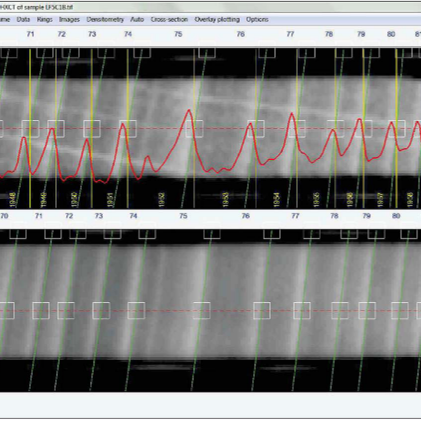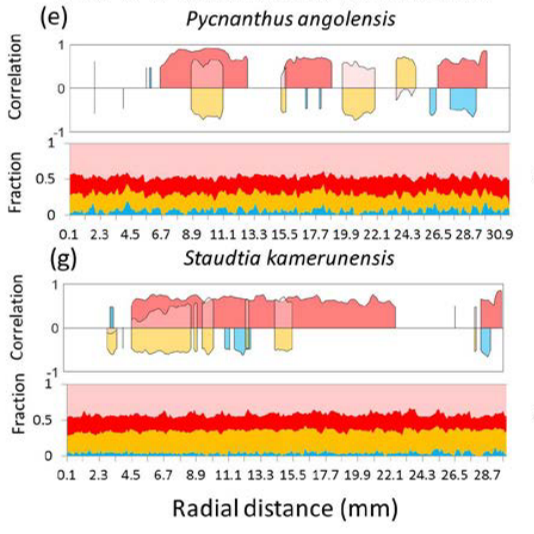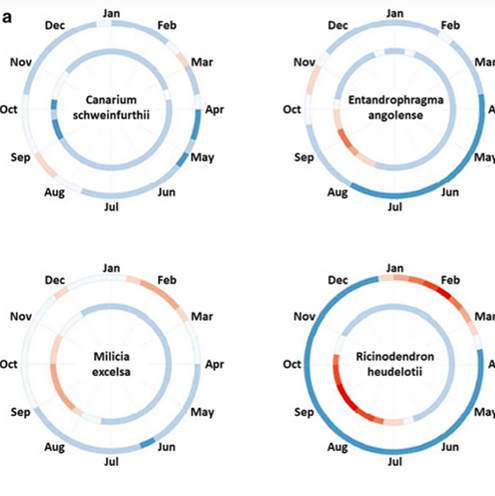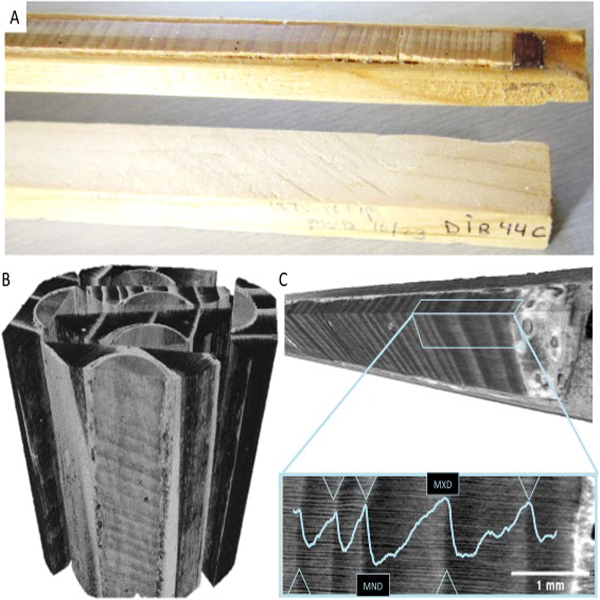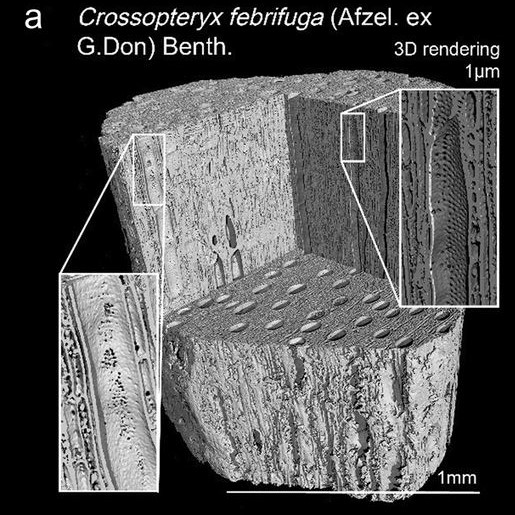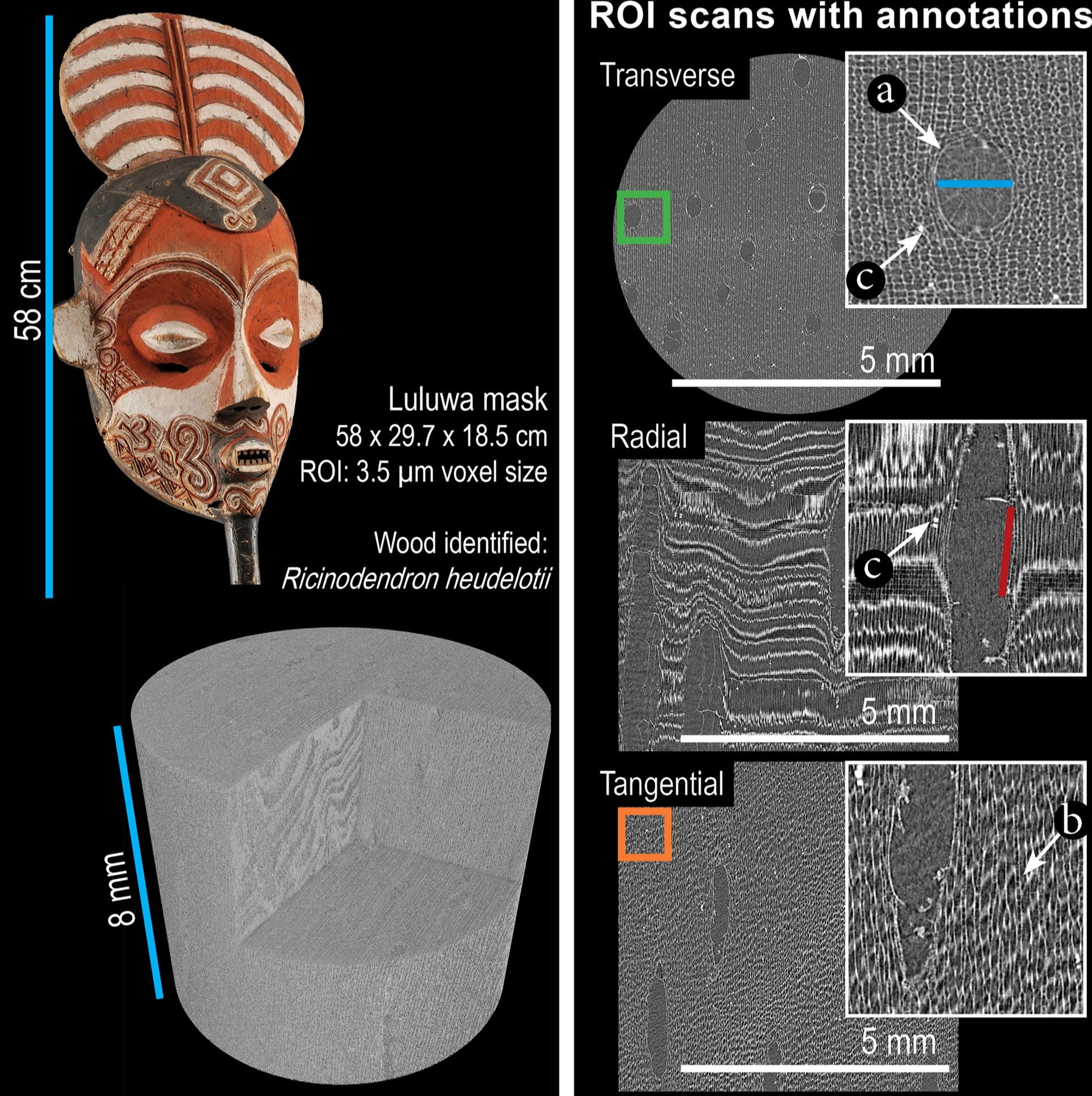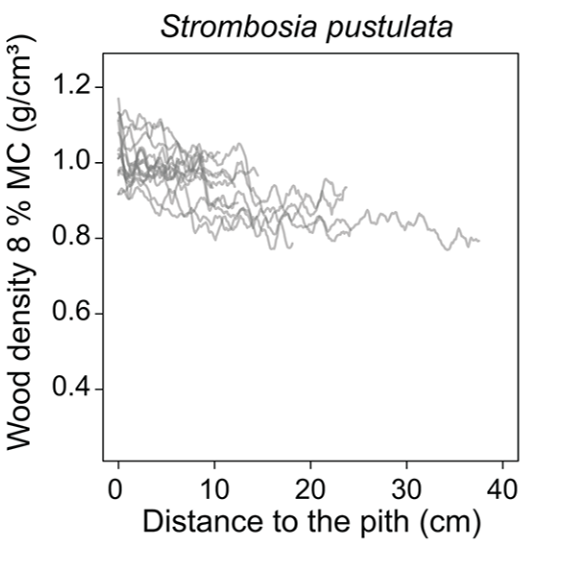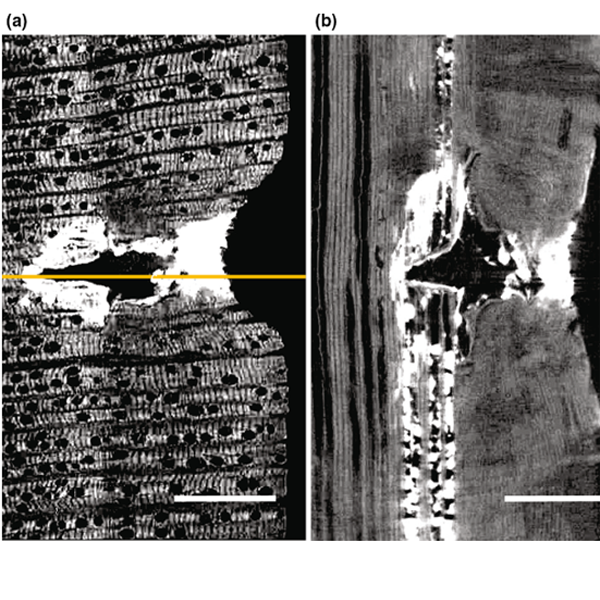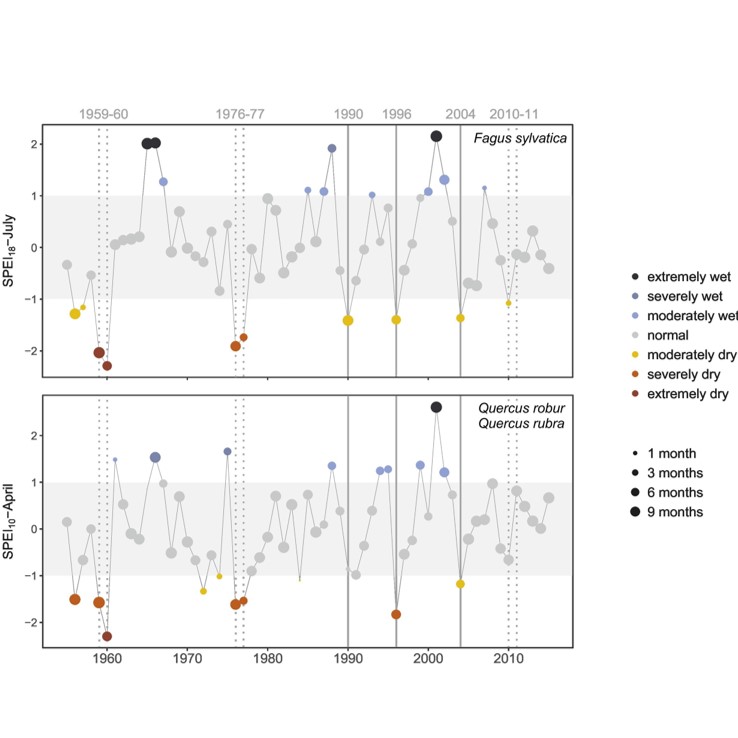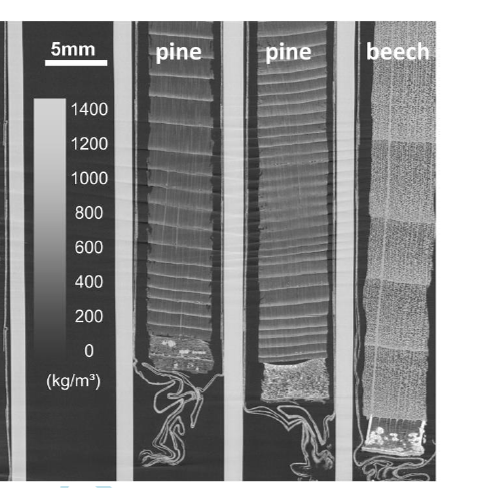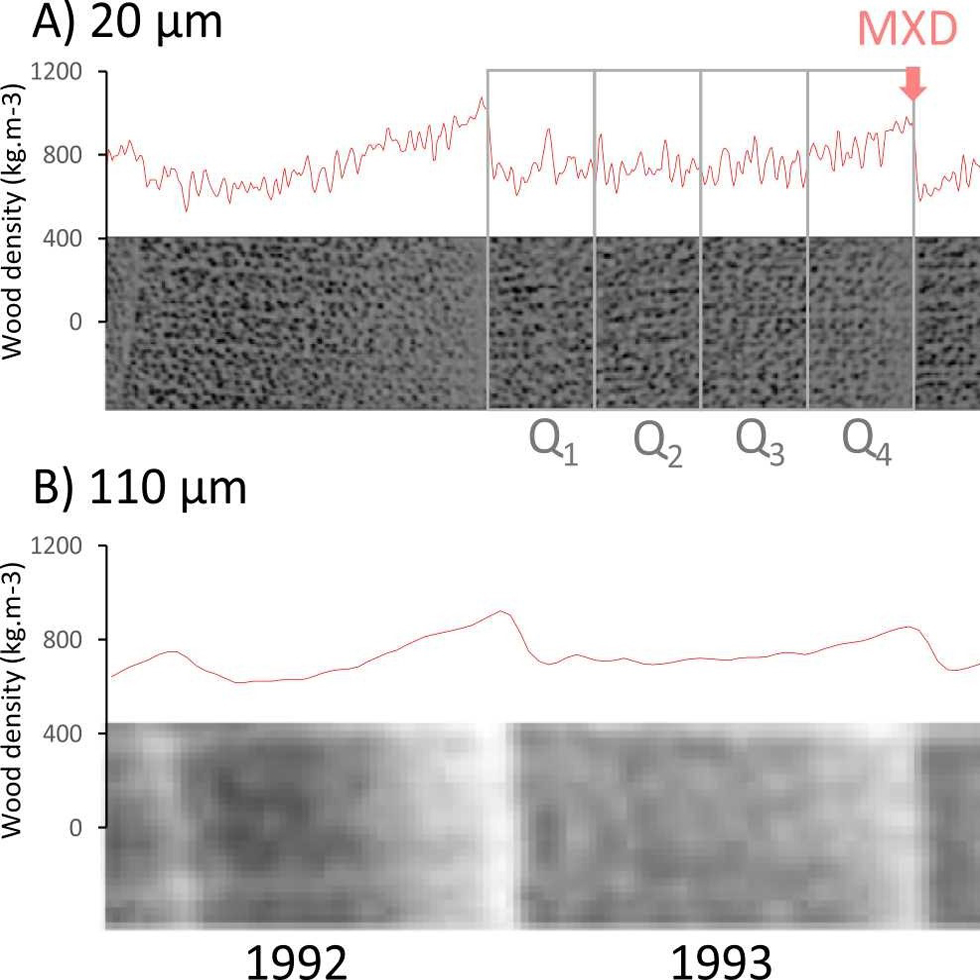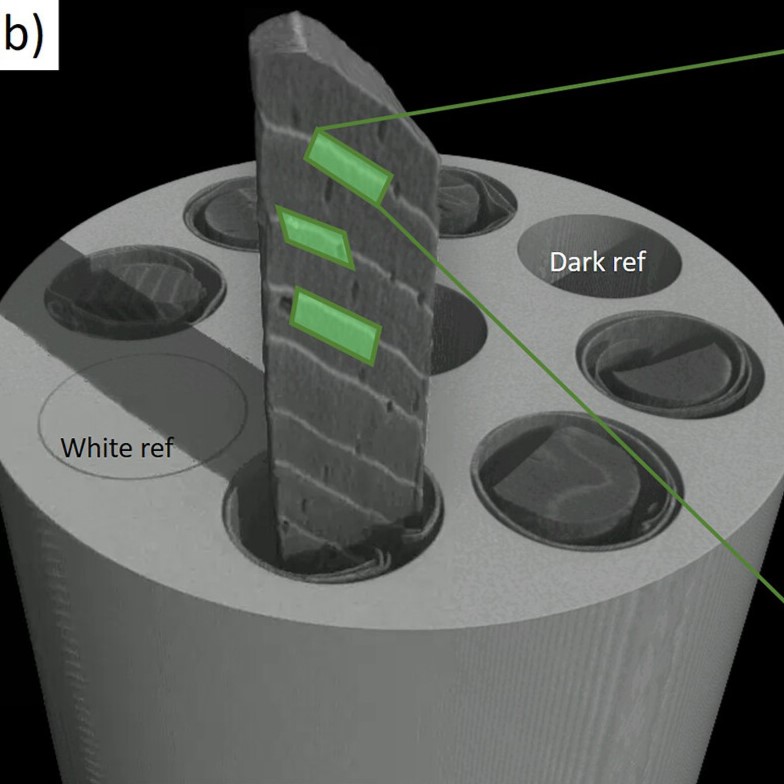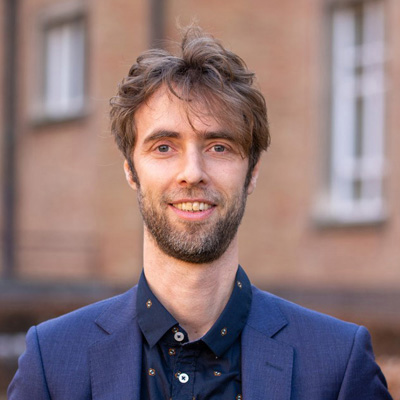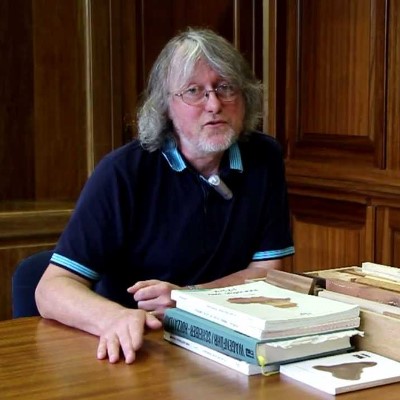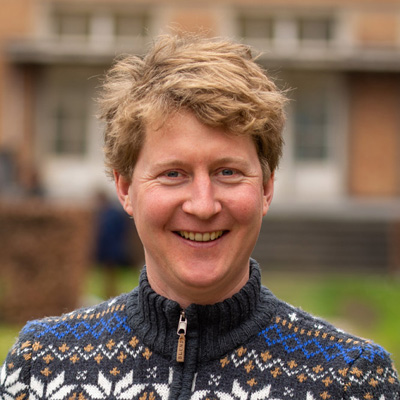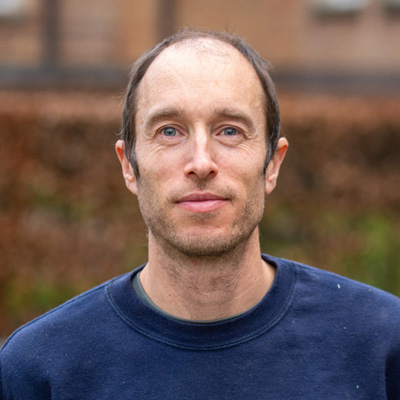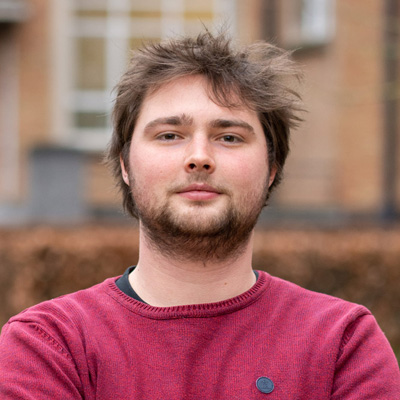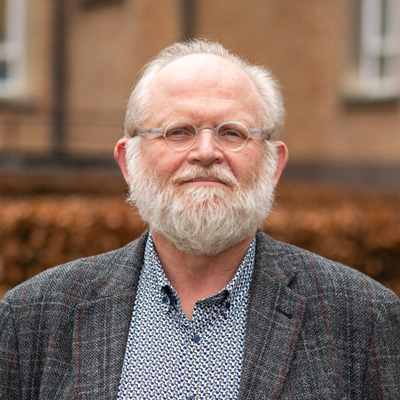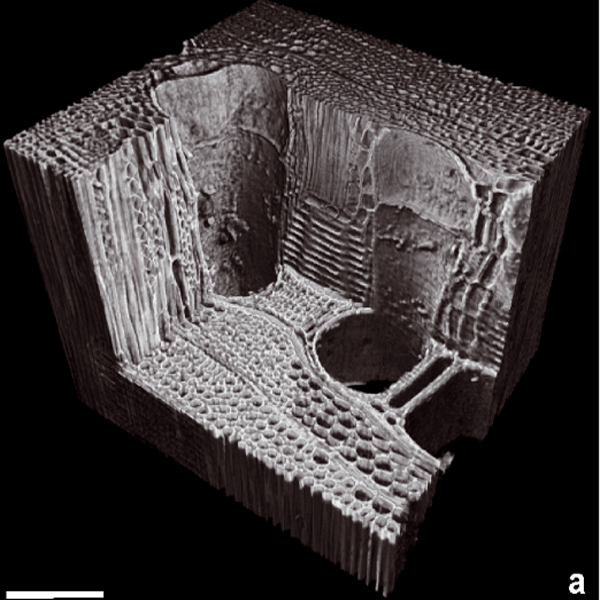
Dendrochronomics
Tree-ring research revisited.
What is X-ray micro-CT?
X-ray micro-CT is a non-destructive technique to visualize the internal structure of an object by using the power of X-rays to pass through matter. The technique has evolved at an incredible speed the last two decades, and is an important tool in research and development, as well as for industrial applications. UGent-Woodlab is part of the UGCT (UGent Centre for X-ray Tomography) where new X-ray micro-CT techniques and applications are developed. You can find more info on the UGCT website regarding, among others, the available systems. The video below is an introduction to the UGCT:
Below you can find two surface renderings of submicron X-ray micro-CT scans that can be manipulated when pressing the play button.
X-ray micro-CT & tree rings
Tree rings provide essential insights into historical climate conditions and current ecosystem dynamics. Density measurements complement traditional tree-ring width series by extracting additional climate signals embedded within tree rings, with maximum latewood density serving as the gold standard for summer temperature reconstructions. However, the labor-intensive wood sample preparation required by conventional techniques is limiting the widespread use of tree-ring densitometry. X-ray micro-CT (XµCT) offers a novel, non-destructive, 3D densitometry technique that enables simultaneous study of tree ring width and wood density at high resolution and with minimal sample preparation.

Over the course of 10+ years, UGent-Woodlab has developed a highly optimized XµCT pipeline (described in this paper) aimed at large-scale tree-ring densitometry studies, capable of processing large amounts of increment cores while having a low demand for human labor time and active scanner time. This pipeline includes free software packages to process scans and measure the digital increment cores. Overall, this XµCT toolchain represents a significant leap forward in tree-ring densitometry, enabling large-scale studies with a wide spatial extent, high replication, or long temporal range.
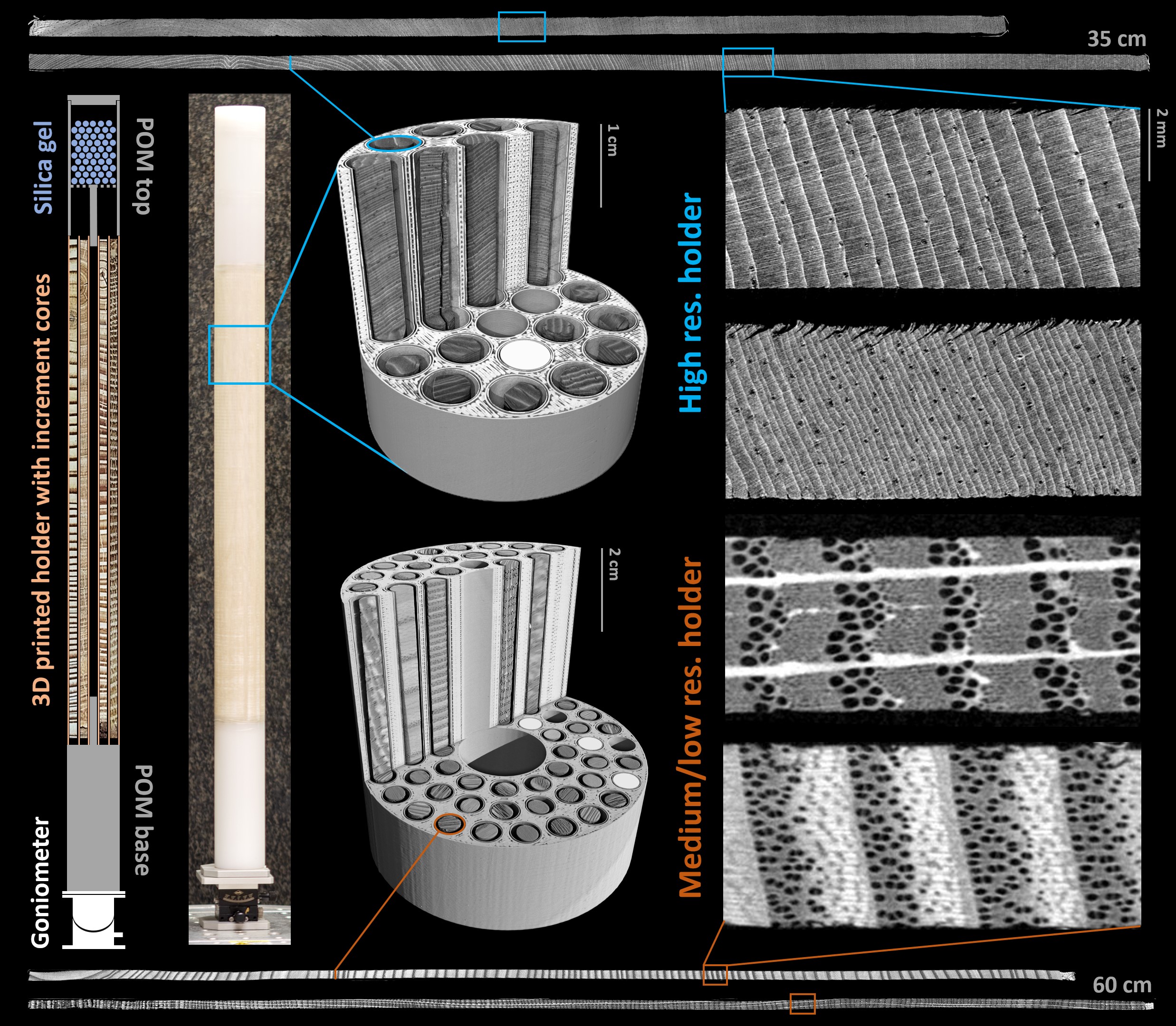
The figure above (adapted from Verschuren et al. 2025) shows the capabilities of our current setup: XµCT on long increment cores (35 - 60 cm) at high (15 µm), medium (30 µm), and low resolutions (60 µm, not shown) with a large number of samples per scan (16 - 48).
Collaborate with us
The presented toolchain was developed at the UGent-Woodlab and UGCT (UGent Center for X-ray Tomography) and we welcome any international collaborators interested in applying XµCT-based tree-ring densitometry in their research. If you are interested in applying our toolchain in your work, collaborate with us on a project, or you want to know more about X-ray CT scanning for tree-ring analysis, feel free to contact us . Additional information about our other research is available on the UGent-Woodlab website.
Downloads
The in-house developed XCT Toolchain software suite, based on MATLAB, consists of three executable programs: CoreProcessor, which extracts individual cores from scans and converts them to absolute density values; RingIndicator, designed for semi-automatic ring indication and density profile calculation; and CoreComparison, which facilitates cross-dating. The packages are compiled for Microsoft Windows, and require the free installation of MATLAB Runtime (R2024b).
- Three software packages and Excel templates (Always check the latest version on github)
- MATLAB Runtime (R2024b).
- XCT.Read R-function with examples
- A short manual (best used in combination with our video manuals)
- Test scans and volumes
- Sample holder stl files
- Heel correction code for helical CT
Please cite the following papers when using our toolchain or software: Van den Bulcke et al. 2014, De Mil et al. 2016, Van den Bulcke et al. 2019, De Mil and Van den Bulcke 2023, Verschuren et al. 2025. When using the software, also cite the proper Zenodo DOI: XCT Toolchain compiled packages and XCT.Read R function.
Instruction manual and videos
This short written manual is best used in combination with the following video manuals, explaining the use of each software package in more detail:
CoreProcessor:
RingIndicator:
CoreComparison:
Papers and projects

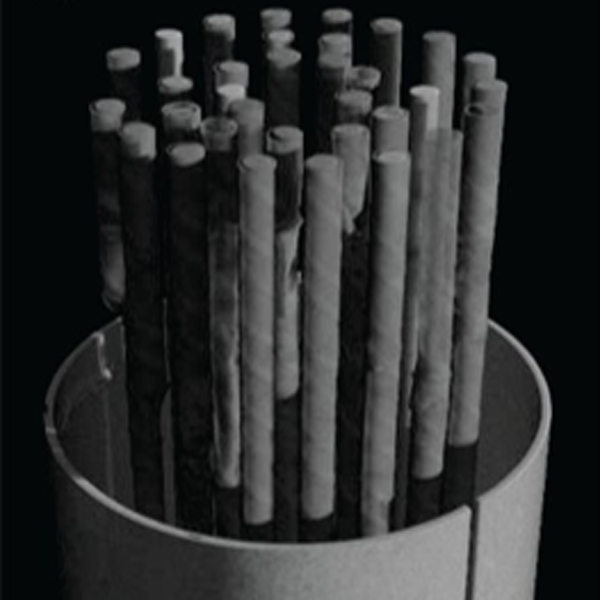
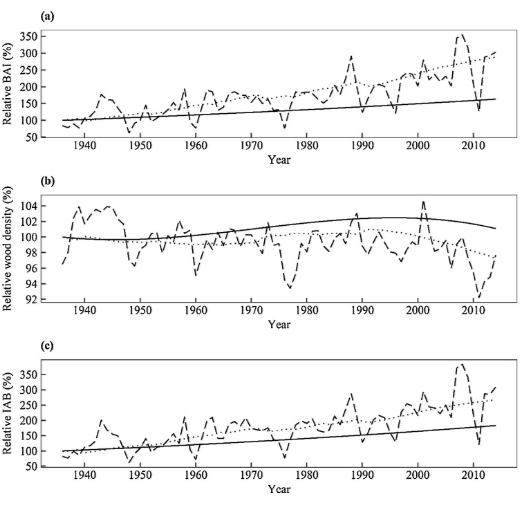
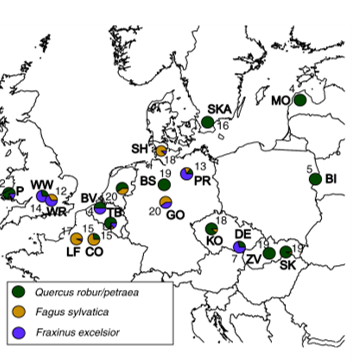


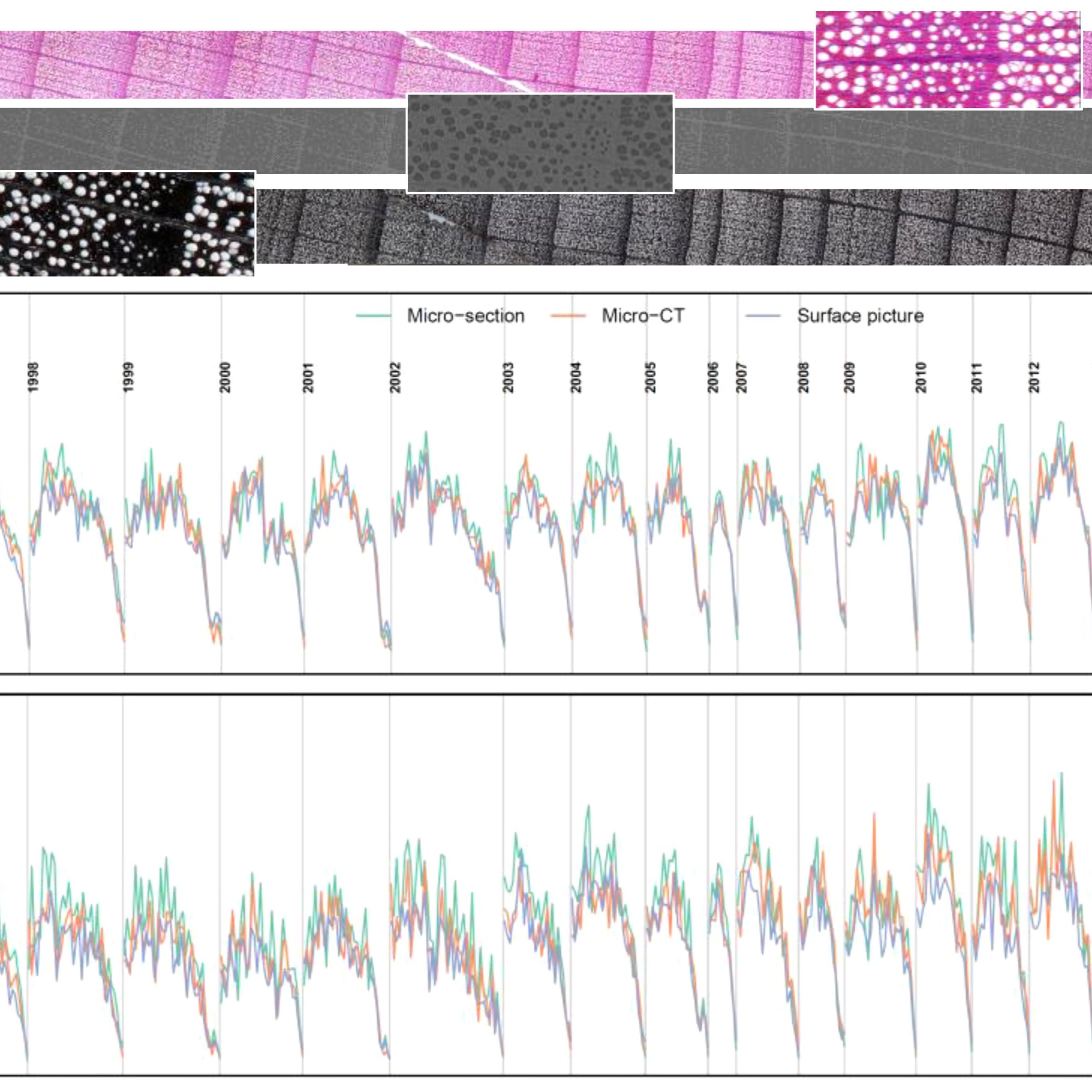
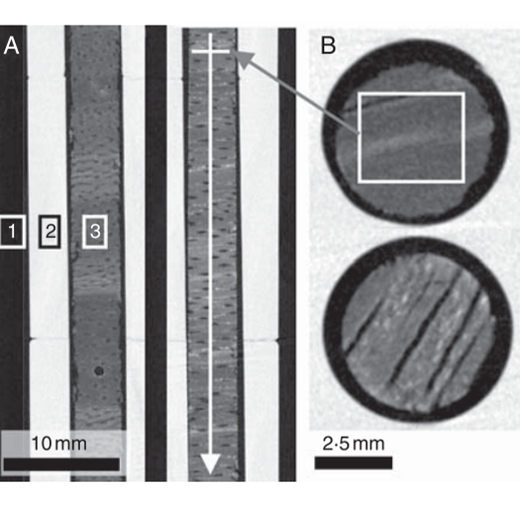
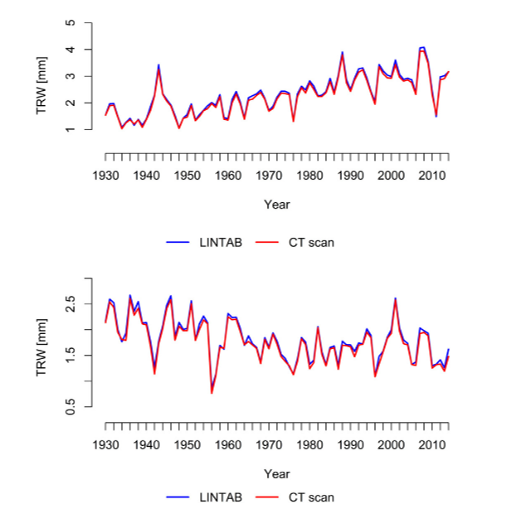
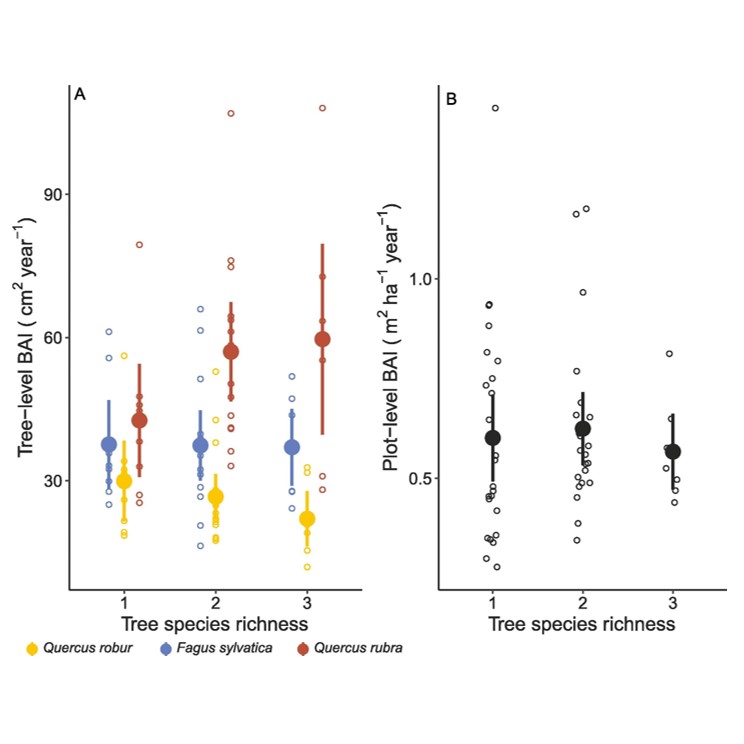
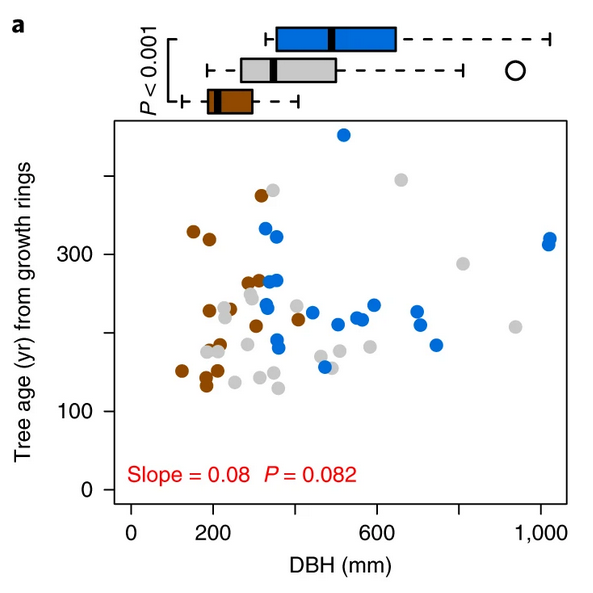

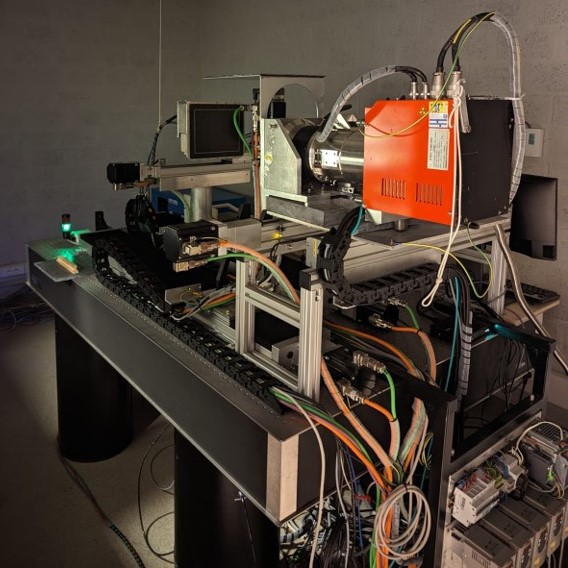

Ongoing projects related to dendrochronomics:
- XyloDynaCT: A game-changing perspective on intra-seasonal wood formation dynamics using high-resolution X-ray Computed Tomography to elucidate leaf senescence and autumn dynamics of temperate deciduous trees in Europe
- ACTREAL: ACcurate Temperature REconstructions and climate change mapping in tree rings of Ancient bristlecone pines, the Longest-living trees in the world
- TOCOWO: TOmography of COngolese Wooden Objects
- CONteXT: CONgolese heritage objects examined and contextualized through X-ray Tomography
Database
Within dendrochronomics, we also aim at the development of a database, both containing pith-to-bark density profiles based on 3D X-ray CT volumes as well as (partially annotated) pith-to-bark cross-sections. Currently, more than 5000 cores from locations in Africa, N- and S-America and Europe haven been X-ray CT scanned (see map below).
Following projects (number corresponds with 'projectnr' in the pop-up on the map) and associated people contributed to the database:
- IFS funded PhD Moses Libalah
- ITTO funded PhD dr. Agathe Dié
- VLIR-UOS funded PhD dr. Maaike De Ridder
- Master thesis Victor Deklerck
- ERC PASTFORWARD : Prof. Kris Verheyen, Sybryn Maes
- Special Research Scholarship Tom De Mil
- BELSPO BiosphereTraits project
- FRIA PhD project Yegor Tarelkin
- UCL Project Benoit Cassart
- BAEF Tom De Mil/NSF Will Tintor, Matt Meko, Connie Woodhouse, Valerie Trouet
- Ellen Janssen, Bart Muys, Nesibe Köse
- Lamarche, Dunwiddie, BAEF Tom De Mil, Matt Meko, Valerie Trouet
- Master thesis Siebe Puynen
- Master thesis Louis Veschuren
- MixForChange : Prof. Lander Baeten, dr. Haben Blondeel
- PhD Sanne Van Den Berge
- Master thesis Alix Van Hoeyweghen
- Master thesis Lise Meir
- Master thesis Paul Jhon Diezon
- LEAF-FALL project Matteo Campioli
- TREEWEB project: Margot Vanhellemont
- FWO ACTREAL project: Jan Van den Bulcke, Vladimir Matskovsky, Valerie Trouet, Charlotte Pearson, Tom De Mil, Matthew Salzer, Luc Van Hoorebeke, Louis Verschuren
- Juniperus przewalskii project Bao Yang
- Master thesis Theotime Sirjacobs
- FWO Cooltree: Pieter De Frenne, Louis Verschuren
- INBO Pinus sylvestris: Andries Searens, Arthur De Haeck

